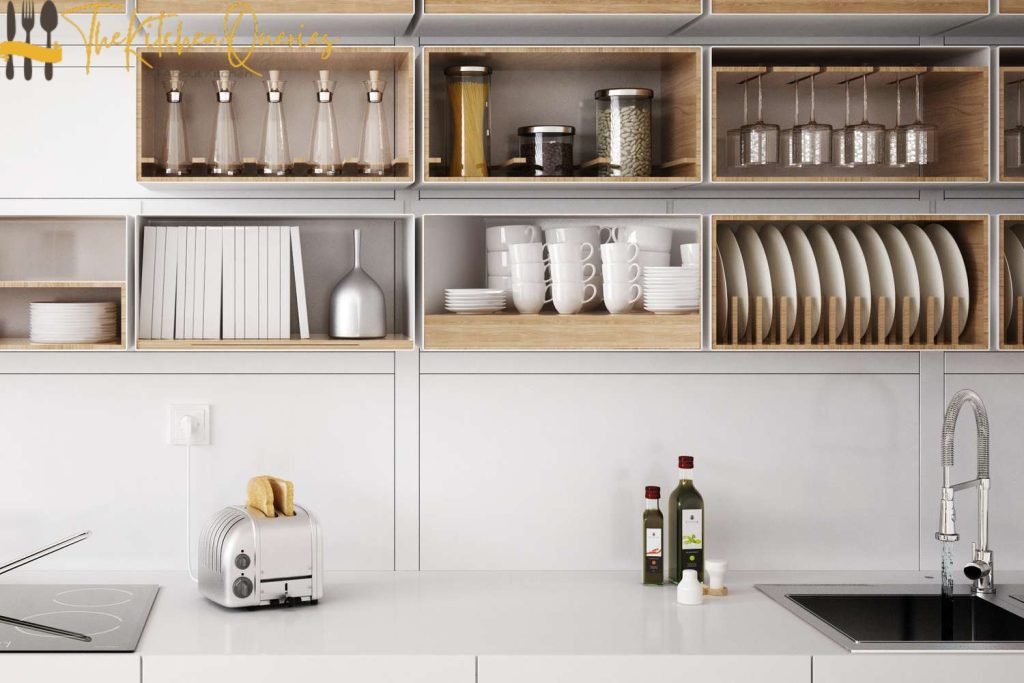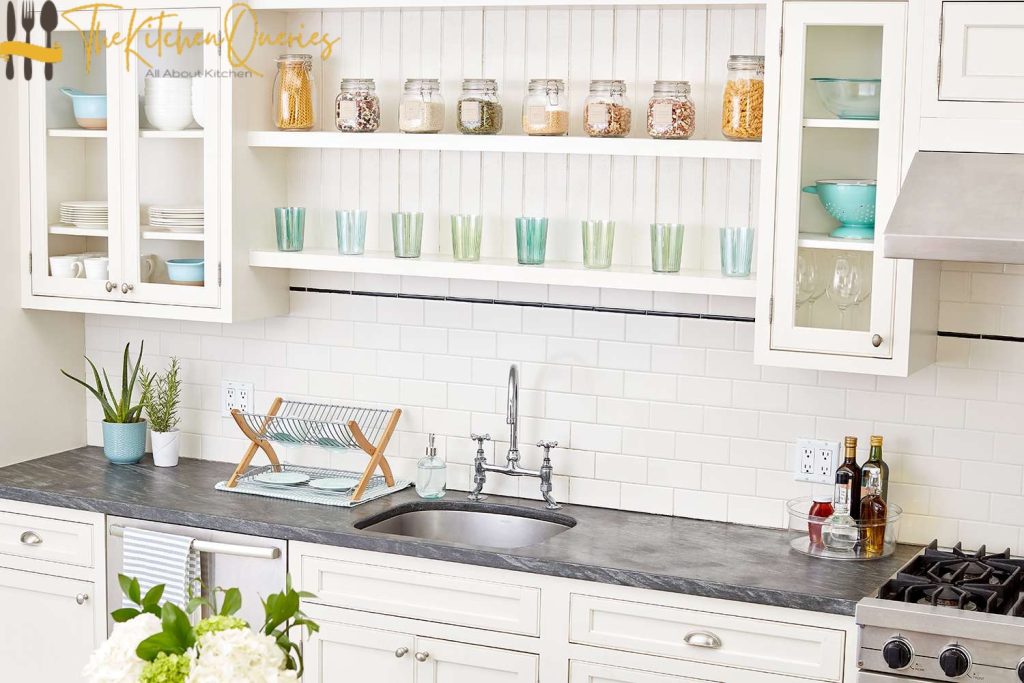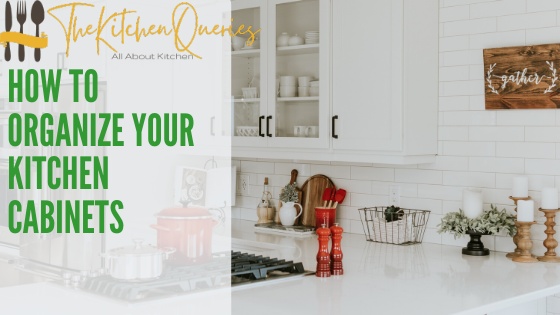Welcome to the ultimate guide on how to organize your kitchen cabinets!
A well-organized kitchen not only enhances your culinary experience but also saves you valuable time and energy.
With a systematic approach and a few innovative strategies, you can transform your cluttered and chaotic cabinets into efficient and functional spaces that will make cooking and meal prep a breeze.
In this comprehensive guide, we will explore practical tips, creative ideas, and clever storage solutions to help you maximize the space in your kitchen cabinets and create an organized oasis where everything has its place.
Get ready to streamline your kitchen and embark on a journey of culinary efficiency!
How to Organize Your Kitchen Cabinets?

An organized kitchen is the heart of a functional and efficient home.
One of the key elements of achieving a well-organized kitchen is properly organizing your kitchen cabinets.
With a systematic approach and smart strategies, you can maximize the available space, eliminate clutter, and make everything easily accessible.
Following is the complete process to help you declutter, sort, and arrange your kitchen cabinets in a way that suits your needs.
Whether you’re dealing with limited cabinet space or simply looking to streamline your storage, these practical tips and organization techniques will transform your kitchen cabinets into a well-ordered haven of culinary bliss.
Step 1: Assess Your Storage Space
Before diving into organizing your kitchen cabinets, take some time to assess the available storage space.
Evaluate the number and size of your cabinets, shelves, and drawers. Consider their proximity to your cooking and food prep areas.
This assessment will help you determine how to allocate different items and create an efficient workflow in your kitchen.
Step 2: Declutter and Purge
The next step is to declutter and purge your kitchen cabinets. Start by emptying each cabinet and thoroughly inspecting its contents.
Get rid of items that are expired, broken, or no longer used. Donate or discard duplicates, mismatched items, and appliances that have seen better days.
Be ruthless in your decluttering process to free up valuable space and make room for items that truly matter.
Step 3: Sort and Categorize
Once you’ve decluttered, it’s time to sort and categorize your kitchen items.
Group similar items together, such as cookware, bakeware, utensils, and food storage containers.
Sort your pantry items into categories like canned goods, spices, grains, and snacks.
This sorting process will make it easier to determine the most efficient way to store each category and help you decide which cabinets or drawers are best suited for them.

Step 4: Plan Your Cabinet Layout
Now that you have a clear idea of the items you’ll be organizing, it’s time to plan the layout of your kitchen cabinets.
Consider accessibility and frequency of use when assigning storage spaces. Keep frequently used items within easy reaches, such as near the stove or food prep area.
Reserve higher or lower shelves for items used less often.
Utilize vertical space by installing adjustable shelves or using stackable organizers to make the most of your cabinets’ height.
Step 5: Choose the Right Storage Solutions
Invest in practical storage solutions to maximize the efficiency of your kitchen cabinets.
Consider using drawer dividers for utensils, spice racks for easy access to spices, and stackable storage containers for food items.
Utilize door-mounted organizers or hooks for hanging frequently used tools or towels.
Utilize the back of cabinet doors for storing cutting boards, baking sheets, or pot lids.
By incorporating these clever storage solutions, you can create additional space and keep your cabinets tidy.
Step 6: Implement a Labeling System
To maintain an organized kitchen cabinet system, consider implementing a labeling system.
Label containers, shelves, or drawers to help you and others easily identify where items belong.
This simple step will not only save you time but also encourage everyone in your household to put things back in their designated places.
Step 7: Regular Maintenance and Review
Lastly, maintaining an organized kitchen cabinet system requires regular maintenance and review.
Every few months, take the time to assess your cabinets and make adjustments as needed.
Evaluate if any new items have been added or if your storage needs have changed.
This regular review will ensure that your cabinets remain organized and functional over time.
What to Store in Upper Cabinets?

Upper cabinets in the kitchen are typically more accessible and suitable for storing items that you use frequently or require easy reach.
Here are some common items to store in upper cabinets:
- Everyday Dishes: Keep your typical dishes, such as plates, bowls, and glasses, in the upper cabinets for easy access during mealtime.
- Drinking Glasses and Mugs: Store your drinking glasses and coffee mugs in the upper cabinets near your beverage station for convenience.
- Food Storage Containers: Reserve a section of your upper cabinets for storing food storage containers and their corresponding lids. Keep them organized by nesting containers and storing lids nearby.
- Cooking Utensils: Keep frequently used cooking utensils, like spatulas, wooden spoons, and tongs, in a utensil holder or drawer organizer placed in an upper cabinet close to the stove.
- Spices and Seasonings: Reserve a cabinet near your food preparation area for storing spices and seasonings. Use a spice rack or tiered shelf insert to keep them organized and easily visible.
- Baking Supplies: Dedicate an upper cabinet to store baking essentials like measuring cups, mixing bowls, baking sheets, and cake pans. Use dividers or stackable organizers to keep these items neatly arranged.
- Small Appliances: If you have limited counter space, consider storing small appliances like blenders, toasters, or coffee makers in upper cabinets. Make sure the cabinets are sturdy enough to support their weight.
- Snacks and Cereal Boxes: Use an upper cabinet to store snack items, cereal boxes, and packaged foods that you and your family enjoy. Keep them in clear containers or baskets for easy visibility and access.
- Cookbooks: Reserve a section of an upper cabinet for your collection of cookbooks. Keep them organized vertically or use bookends to prevent them from toppling over.
- Special Occasion Dinnerware: If you have fine china or special occasion dinnerware that you use less frequently, store them in upper cabinets to keep them protected and out of the way.
Side Note: Remember to adjust the storage allocation based on your kitchen layout, accessibility, and personal preferences.
Organize the items in a way that makes sense to you and promotes efficient use of your kitchen space.
What to Store in Lower Cabinets?

Lower cabinets in the kitchen tend to be deeper and more spacious, making them ideal for storing larger and heavier items.
Here are some common items to store in lower cabinets:
- Pots and Pans: Dedicate a lower cabinet to store your pots and pans. Utilize stackable pots and pans organizers or install a pull-out drawer system to make them easily accessible.
- Small Appliances: Reserve lower cabinets for storing larger small appliances like slow cookers, blenders, or stand mixers. Make sure the cabinets are sturdy enough to support the weight of these appliances.
- Mixing Bowls and Bakeware: Keep mixing bowls, baking dishes, cake pans, and other bakeware in lower cabinets. Use dividers or adjustable organizers to keep them organized and prevent them from sliding around.
- Cutting Boards and Baking Sheets: Store cutting boards and baking sheets vertically in a lower cabinet using wire racks or tension rod holders. This saves space and keeps them easily accessible.
- Tupperware and Food Storage Containers: Dedicate a lower cabinet to store Tupperware and food storage containers. Use stackable containers and lids to maximize space and keep them organized.
- Small Kitchen Appliances: If you have larger appliances like toaster ovens, air fryers, or countertop grills, consider storing them in lower cabinets to free up counter space. Ensure there’s enough clearance and proper ventilation.
- Cleaning Supplies: Reserve a lower cabinet for storing cleaning supplies such as cleaning solutions, brushes, sponges, and dishwashing detergent. Use caddies or bins to keep them organized and easily accessible.
- Pet Food and Supplies: If you have pets, allocate a lower cabinet for storing pet food, treats, and supplies like leashes or grooming tools. Keep them in sealed containers to maintain freshness.
- Baking Ingredients: Reserve a lower cabinet or drawer for storing baking ingredients like flour, sugar, baking powder, and cocoa powder. Use airtight containers or clear jars for easy visibility and freshness.
- Extra Pantry Items: If you have overflow pantry items like extra canned goods, bulk purchases, or non-perishable items, utilize lower cabinets for additional storage. Keep them organized by category using labeled bins or baskets.
Side Note: Remember to consider the weight and accessibility of items when storing them in lower cabinets.
Place heavier items towards the bottom to maintain stability, and ensure frequently used items are within easy reach.
Video Guide:
Frequently Asked Questions (FAQs):
What should I do first when organizing kitchen cabinets?
The first step in organizing kitchen cabinets is to declutter.
Empty out each cabinet and assess the contents, getting rid of any expired, broken, or unused items.
This will create a clean slate and make it easier to sort and arrange the remaining items in an organized manner.
What should I store under the kitchen sink?
Under the kitchen sink is an ideal space to store cleaning supplies, such as dish soap, surface cleaners, sponges, and scrub brushes.
You can also store extra garbage bags, recycling bins, and other utility items like rubber gloves or paper towels.
Consider using storage caddies, bins, or organizers to keep these items neatly arranged and easily accessible.
What should I not store in kitchen cabinets?
Avoid storing perishable food items like fruits, vegetables, or dairy products in kitchen cabinets, as they require refrigeration to maintain freshness and prevent spoilage.
Additionally, flammable or hazardous materials such as gasoline, lighter fluid, or cleaning solvents should not be stored in kitchen cabinets due to the risk of fire or chemical exposure.

I am an internet evenglits, a foodie, and a learner.

